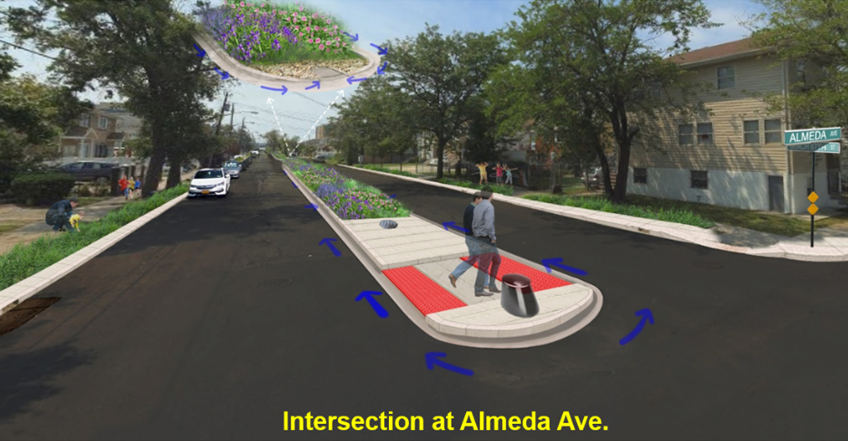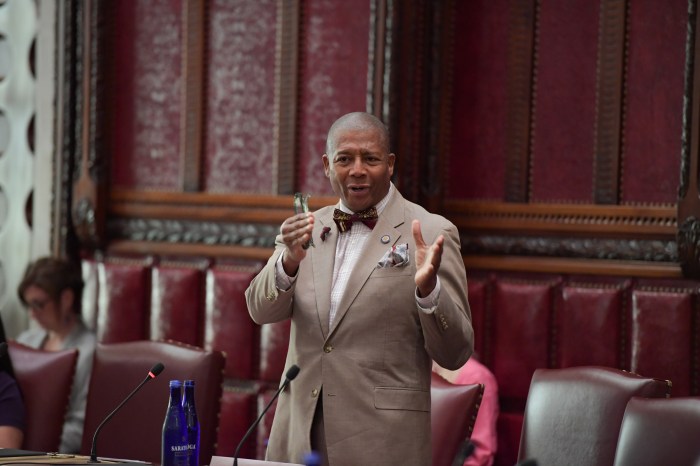The city Department of Environmental Protection (DEP) announced on Friday, July 29, that construction has begun to transform three roadway medians in Arverne into lush, green infrastructure to better manage stormwater and reduce chronic neighborhood flooding.
The new green infrastructure roadway medians will feature large-scale bio-retention areas, subsurface stormwater storage and pedestrian ramp improvements along Beach 67th Street between Almeda and Thursby avenues.
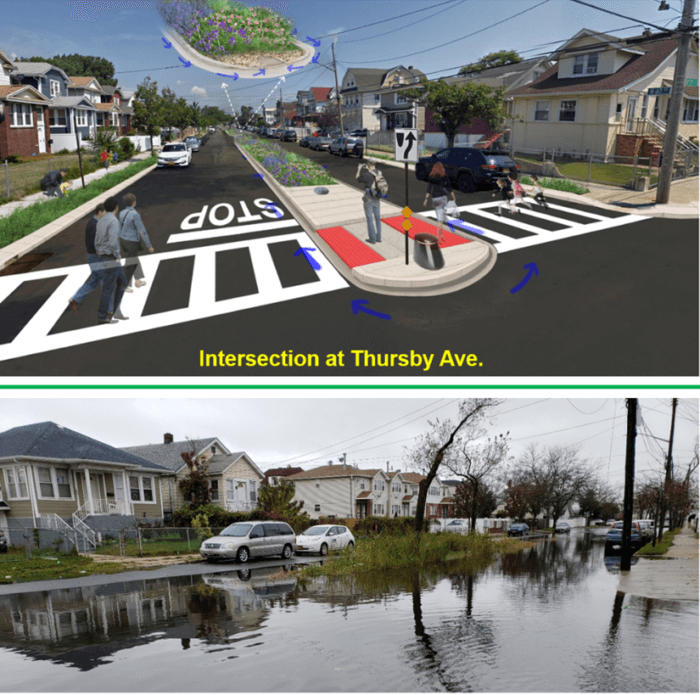
The new medians will be capable of absorbing a significant volume of stormwater and the project is estimated to cost $1.2 million.
As the climate continues to change and rainstorms are intensifying across the five boroughs, Mayor Eric Adams said they must remain dedicated to looking for any and all locations to build green infrastructure.
“Turning this crumbling median into a beautiful, natural sponge will improve both public safety and quality of life for our neighbors in Arverne, Queens,” Adams said. “My administration already has the largest, most aggressive green infrastructure program in the country, and New Yorkers can expect to see a lot more of these nature-based solutions in the coming months.”
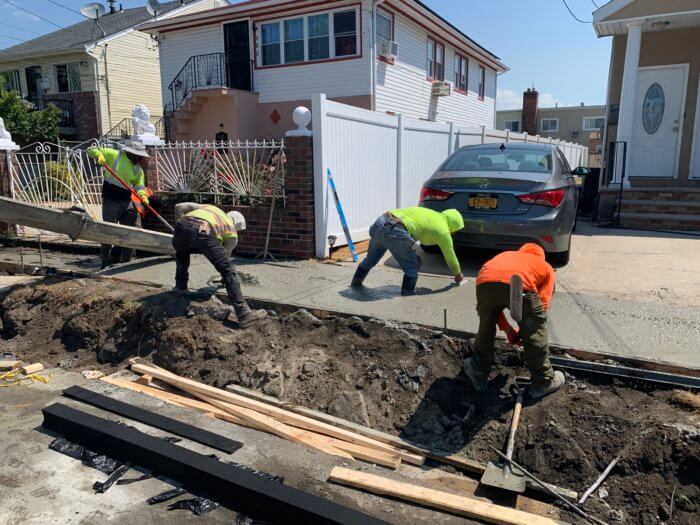
According to DEP Commissioner Rohit Aggarwala, transforming these medians into working green infrastructure elements will reduce any standing water after storms along Beach 67th Street while also augmenting drainage capacity throughout the neighborhood.
“In just the last several years we have constructed more than 11,000 green infrastructure assets that absorb stormwater and beautify neighborhoods and we will continue to aggressively expand this critical work that is making our city more resilient to the changing climate,” Aggarwala said.
The project will include the reconstruction of the three current medians and the construction of the green infrastructure elements, such as bio-retention and detention structures. The landscape work will include the addition of native plants, shrubs, ornamental grasses and perennial wildflowers, which will also help absorb stormwater and enhance the aesthetic value of the surrounding area.
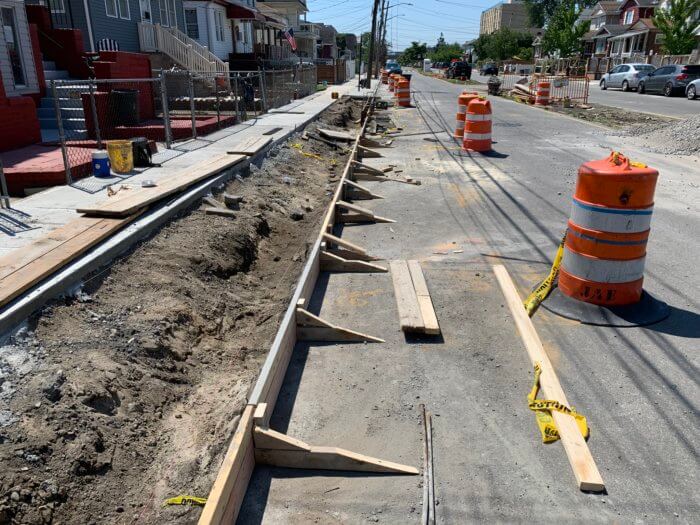
To ensure that stormwater will drain towards the medians, the project includes the reconstruction of the sidewalks and curbs and resurfacing of the roadways. Openings along the curb of the new medians will allow the stormwater to drain into the bioretention and subsurface detention systems.
Additional large concrete medians in Queens, including Queens Village, are slated to be transformed into resilient green infrastructure medians, with additional sites in the planning and design stages.
Over the last several years DEP’s nation-leading green infrastructure program has constructed more than 11,000 green infrastructure installations including curbside rain gardens, green roofs, subsurface detention, permeable pavers, concrete and asphalt, and now green medians have been added to the city’s stormwater management toolbox.
All of these green installations intercept stormwater before it can drain into the sewer system, thereby creating additional capacity to help reduce flooding and sewer overflows into local waterways.
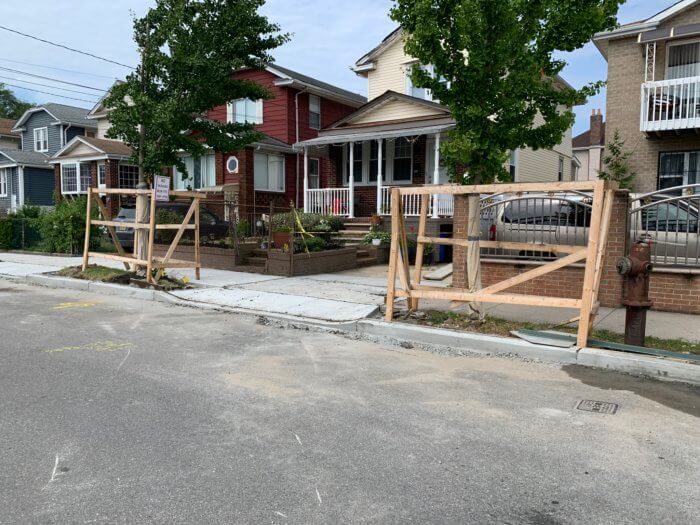
Southeast Queens lawmakers such as Assemblyman Khaleel Anderson, Senator James Sanders Jr. and Councilwoman Selvena Brooks-Powers hailed DEP for listening to residents’ concerns following a tour in April.
“I am thrilled that the first project in New York City to transform such large roadway medians into green infrastructure is piloted in the Arverne portion of the 31st Assembly District,” Anderson said. “I feel confident that these modifications will be received well by my constituents who have seen the unfortunate result of climate change with rising sea levels and flash flooding.”
Sanders said the medians will be both “aesthetically pleasing” while serving a very important purpose, which is to help mitigate the flooding that has plagued the surrounding areas.
“I am all for making our community a greener and more beautiful place. I myself have embarked on a 100K tree-planting project,” Sanders said.
According to Brooks-Powers, beautification projects like this one will help to enhance the district’s environmental resiliency and encourage residents to utilize outdoor open spaces.
“With the installation of green infrastructure assets along Beach 67th Street, our community has another tool in its arsenal to fight against chronic neighborhood flooding and stormwater runoff,” Brooks-Powers said. “Thank you to Commissioner Aggarwala and DEP for implementing a resilient and ornamental roadway median that creates a lush green oasis for residents of the 31st Council District.”
Meanwhile, Queens Borough President Donovan Richards Jr. said that from flood reduction to neighborhood beautification and beyond, Arverne will be well-served by the project and he looks forward to its quick completion.
“As the epicenter of extreme weather events like Superstorm Sandy and Hurricane Ida, Queens knows just how critical resiliency and sustainability efforts are to the well-being of our families,” Richards said. “We must leave no stone unturned when it comes to upgrading our green and gray infrastructure, and this median transformation project in Arverne represents another step forward in our fight against climate change.”

